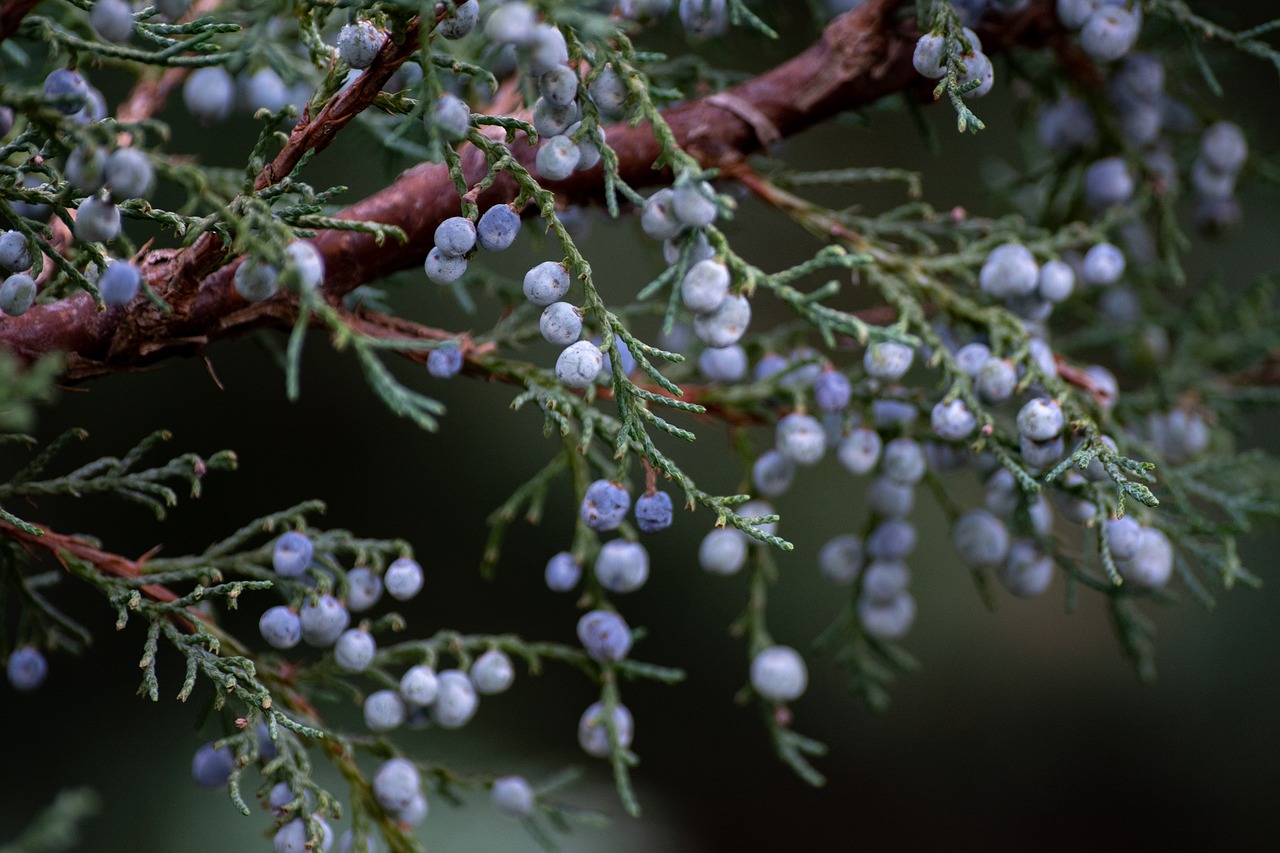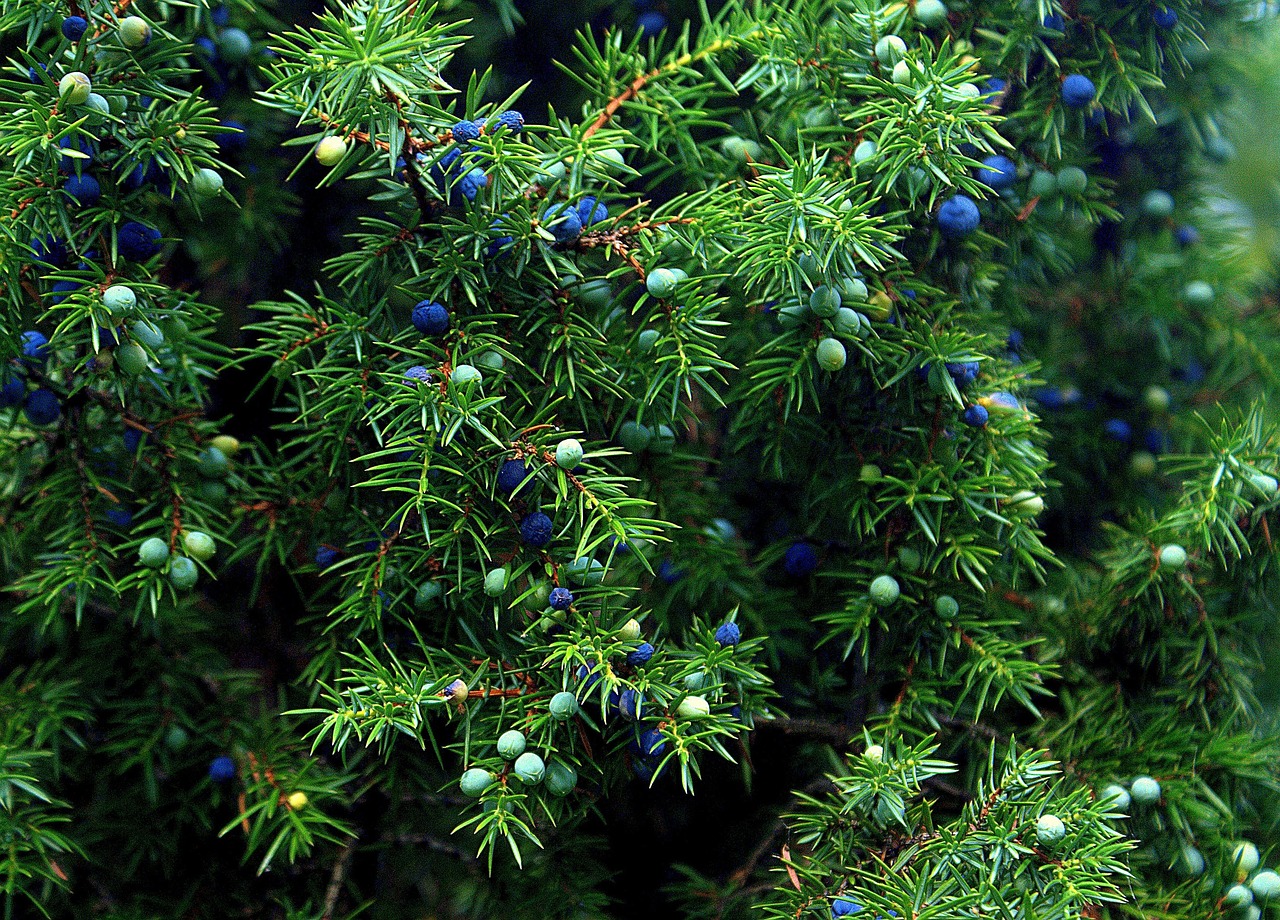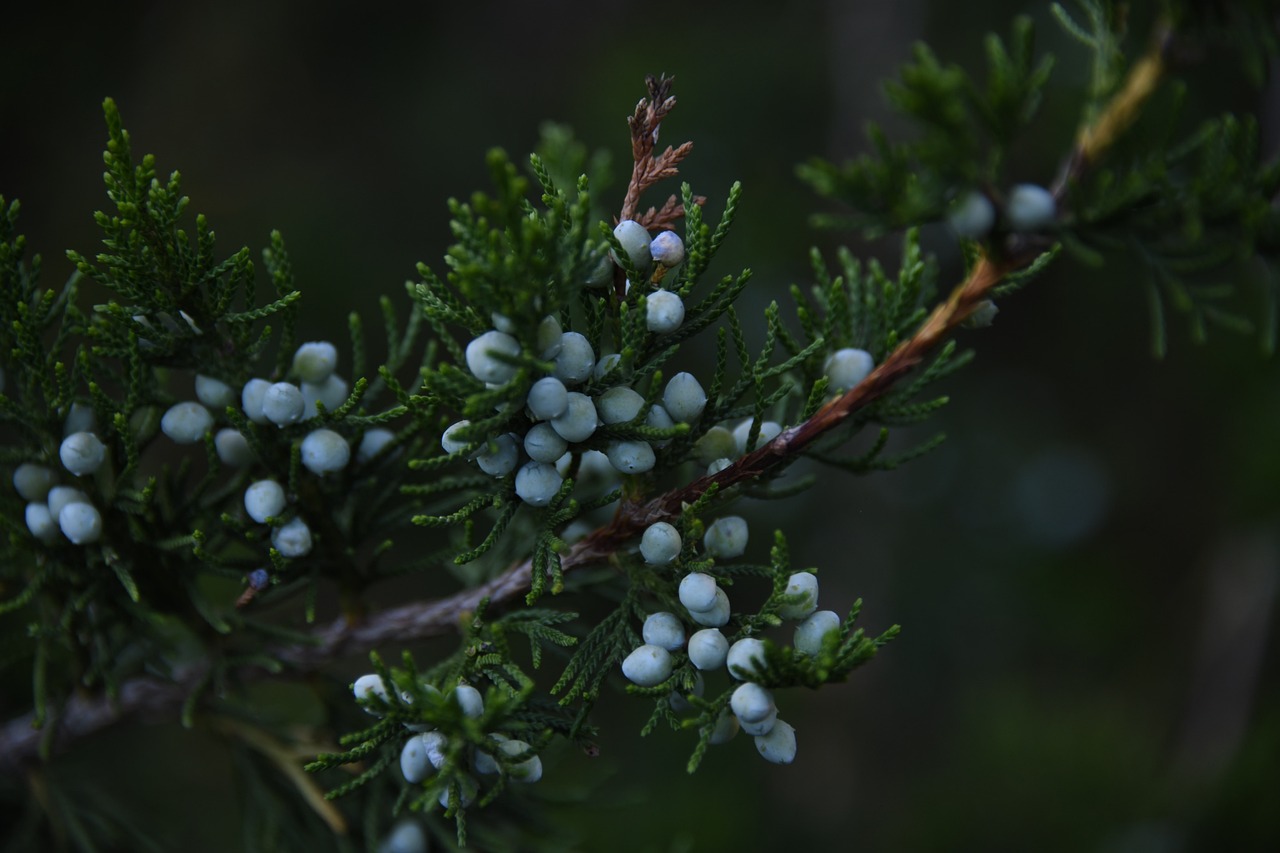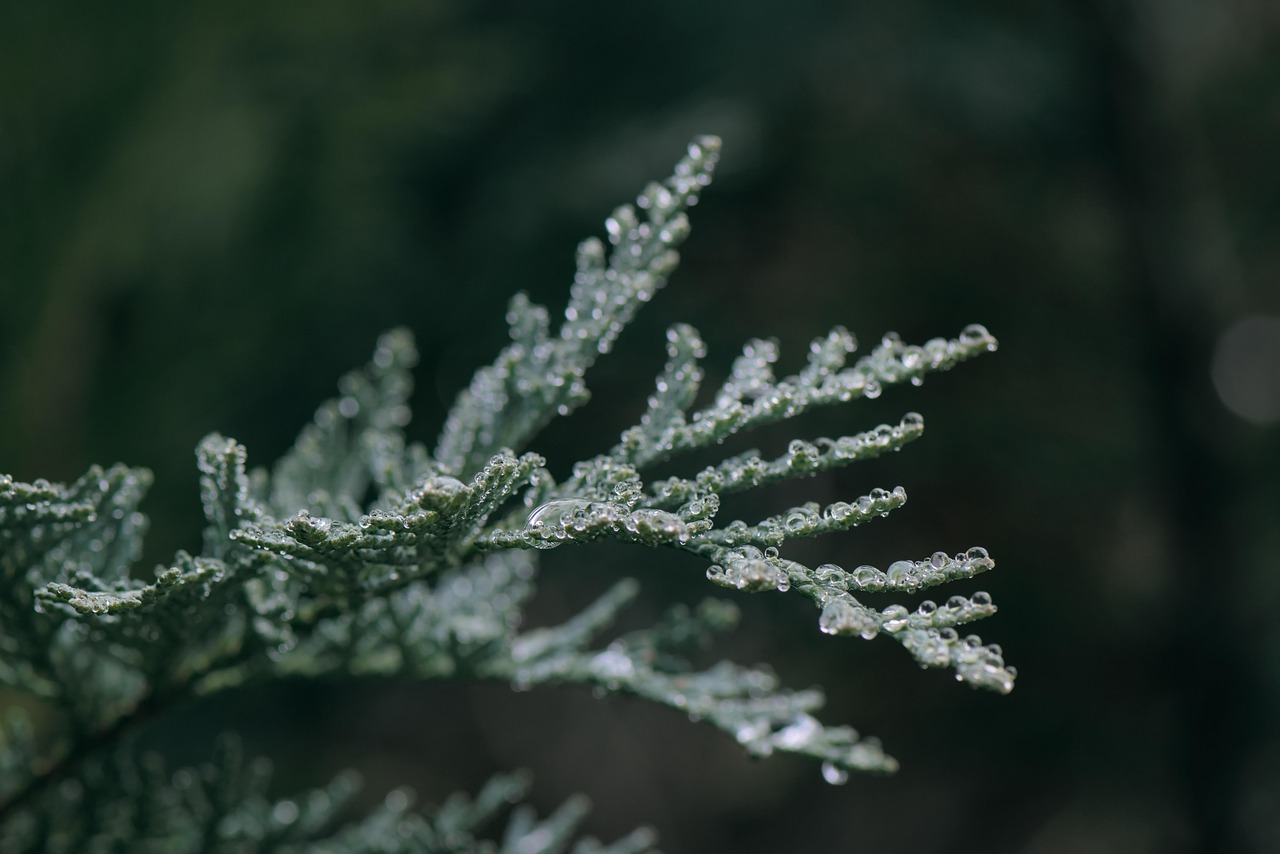Why Blue Star Junipers Are the Perfect Accent for Any Garden
Blue Star Junipers are an excellent choice for garden accents due to their striking blue-green foliage, compact size, and versatility. They provide year-round interest and require minimal maintenance, making them suitable for both novice and experienced gardeners.
When designing a garden, selecting the right plants is crucial for creating a harmonious and visually appealing landscape. The Blue Star Juniper (Juniperus squamata ‘Blue Star’) stands out as a popular choice among garden enthusiasts. With its unique color and form, this dwarf evergreen shrub adds texture and character to any outdoor space. Whether used as a standalone feature or in combination with other plants, Blue Star Junipers can enhance the overall aesthetic of your garden.

Native to the mountainous regions of Asia, Blue Star Junipers thrive in various climates, making them adaptable to many gardening conditions. They are particularly well-suited for rock gardens, borders, and container gardening. Their low-growing nature allows them to serve as beautiful ground cover, effectively suppressing weeds while providing a lush appearance.
Characteristics of Blue Star Junipers
The Blue Star Juniper is notable for its distinctive characteristics that set it apart from other shrubs. Understanding these traits is essential for appreciating their value in garden design.
| Characteristic | Details |
|---|---|
| Foliage Color | Silvery-blue to deep blue-green |
| Height | Typically grows to about 18-24 inches |
| Width | Spreads up to 3-4 feet |
| Growth Habit | Dense and compact |
| Sun Requirements | Prefers full sun but tolerates partial shade |
| Soil Type | Well-drained soil with good drainage |
The unique silvery-blue foliage of Blue Star Junipers not only adds color but also provides a striking contrast when planted alongside other flowering plants or shrubs. Their compact growth habit makes them ideal for smaller gardens, patios, or even indoor spaces in larger containers.
Benefits of Incorporating Blue Star Junipers in Your Garden

Beyond their aesthetic appeal, Blue Star Junipers offer numerous benefits that make them a practical addition to any garden. Here are some key advantages:
- Low Maintenance: Once established, they require minimal care, making them perfect for busy gardeners.
- Drought Tolerance: They are drought-resistant, thriving in dry conditions after their initial growth period.
- Pest Resistance: Blue Star Junipers are resistant to many common pests and diseases.
- Versatility: They can be used in various landscaping styles, including modern, traditional, and rustic gardens.
The combination of these benefits makes Blue Star Junipers not only a beautiful choice but also a smart one for gardeners looking to create an inviting outdoor space. Their adaptability allows them to fit seamlessly into different garden designs while providing practical solutions for gardening challenges.
As you explore the potential of Blue Star Junipers in your garden, consider how their unique features can complement your overall landscape design. With their stunning appearance and practical benefits, these plants can truly transform any outdoor area into a serene retreat.
Caring for Your Blue Star Junipers

To ensure that Blue Star Junipers thrive in your garden, proper care is essential. Although they are low-maintenance plants, understanding their specific needs will help you maximize their health and aesthetic appeal. Below are key aspects of care that every gardener should consider.
Watering Needs
Blue Star Junipers are drought tolerant once established, but proper watering is crucial during their initial growth phase. Here are some tips for effective watering:
- Initial Watering: Water deeply once a week for the first few months after planting.
- Soil Check: Always check soil moisture before watering; allow the top inch to dry out between waterings.
- Seasonal Adjustments: Reduce watering frequency during the winter months when the plant is dormant.
Soil Requirements
The soil type plays an important role in the health of Blue Star Junipers. They prefer well-drained soil to avoid root rot. Consider the following:
- Drainage: Amend heavy clay soils with sand or organic matter to improve drainage.
- pH Level: Blue Star Junipers thrive in slightly acidic to neutral pH levels (6.0 to 7.0).
- Mulching: Apply a layer of mulch around the base to retain moisture and suppress weeds.
Pruning and Maintenance
Regular pruning helps maintain the shape and health of Blue Star Junipers. While they do not require extensive trimming, a few maintenance practices can enhance their appearance:
When to Prune
The best time to prune Blue Star Junipers is in late winter or early spring before new growth begins. This timing allows you to shape the plant without interfering with its growth cycle.
How to Prune
Here are some steps to follow when pruning:
- Use sharp, clean pruning shears to avoid damaging the plant.
- Remove any dead or damaged branches to promote healthy growth.
- Lightly trim the tips of branches to maintain a compact shape.
- Avoid cutting into old wood; new growth will not emerge from these areas.
Pest and Disease Management
While Blue Star Junipers are generally resistant to pests and diseases, they can still encounter problems under certain conditions. Being aware of potential issues can help you keep your plants healthy.
Common Pests
Some pests that may affect Blue Star Junipers include:
- Spider Mites: Look for fine webbing on leaves; treat with insecticidal soap if detected.
- Caterpillars: Inspect for leaf damage; handpick or use organic pesticides if necessary.
Disease Prevention
To prevent diseases such as root rot or blight, consider the following practices:
- Avoid Overwatering: Ensure good drainage to prevent waterlogged soil.
- Monitor Air Circulation: Space plants adequately to promote airflow.
- Fungal Treatment: Apply fungicides if fungal diseases appear, but ensure it is safe for junipers.
Designing with Blue Star Junipers
The aesthetic appeal of Blue Star Junipers makes them a versatile choice for various landscaping styles. Here are some ideas for incorporating them into your garden design:
Rock Gardens
The silvery-blue foliage of Blue Star Junipers pairs beautifully with rocks and gravel. Use them as ground cover among larger stones to create a naturalistic look.
Borders and Edging
Planting Blue Star Junipers along pathways or garden borders can provide structure and definition. Their compact size makes them ideal for neat edges.
Container Gardens
Blue Star Junipers thrive in pots, allowing for easy mobility and flexibility in design. They can be combined with seasonal flowers for vibrant displays throughout the year.

By understanding the care requirements and design potentials of Blue Star Junipers, gardeners can create stunning landscapes that are both beautiful and functional. These plants offer a remarkable way to enhance the visual interest of any garden space.
Companion Planting with Blue Star Junipers
Companion planting is an effective strategy for enhancing the growth and health of various plants in your garden. When combined with Blue Star Junipers, specific companion plants can create a visually appealing landscape while promoting beneficial relationships in the garden ecosystem.
Benefits of Companion Planting
Companion planting offers several advantages that can boost the overall health of your garden:
- Pest Control: Some plants naturally repel pests, protecting neighboring plants like Blue Star Junipers.
- Improved Growth: Certain plants can enhance the growth of others by providing essential nutrients or improving soil conditions.
- Microclimate Creation: Companion plants can help create a favorable environment by providing shade or wind protection.
Ideal Companions for Blue Star Junipers
Selecting the right companion plants can enhance the overall beauty and functionality of your garden. Here are some excellent options:
- Daylilies: Their vibrant blooms contrast beautifully with the blue foliage of Junipers, creating an eye-catching display.
- Hostas: These shade-loving plants thrive in the cooler areas around Junipers, adding lush foliage and texture to the garden.
- Salvia: The vertical growth habit of Salvia complements the low profile of Blue Star Junipers and attracts pollinators.
- Aspidistra (Cast Iron Plant): This hardy plant can thrive in various conditions and pairs nicely in shaded areas near Junipers.
Seasonal Interest with Blue Star Junipers
One of the appealing aspects of Blue Star Junipers is their ability to provide year-round interest in the garden. Different seasons bring unique opportunities to showcase their beauty alongside other plants.
Spring Blooms
As spring arrives, surrounding Blue Star Junipers with early-blooming perennials can create a dynamic visual impact. Consider planting:
- Creeping Phlox: This ground cover produces vibrant flowers that bloom early, complementing the foliage of Junipers.
- Primrose: Their cheerful colors will add joy to your spring garden while contrasting nicely with the blue hues of the Juniper.
Summer Color
In summer, you can maintain visual interest by incorporating flowering annuals or perennials. Some great choices include:
- Petunias: Available in various colors, they can provide a burst of color against the evergreen backdrop.
- Echinacea (Coneflower): These hardy perennials attract pollinators and provide a lovely contrast to the juniper’s foliage.
Autumn Foliage
As the leaves of deciduous plants change color in autumn, Blue Star Junipers continue to stand out as a striking feature in the landscape. To enhance fall scenery:
- Asters: Their late blooms add vibrant purples and blues that harmonize beautifully with the Juniper’s evergreen foliage.
- Ornamental Grasses: Grasses like Miscanthus or Panicum can provide texture and movement, enriching the autumn landscape.
Winter Structure
In winter, Blue Star Junipers maintain their shape and color, providing structure to your garden during a time when many plants become dormant. Adding winter interest can be achieved by:
- Decorative Branches: Incorporate branches such as red twig dogwood for striking contrast against the evergreen backdrop.
- Seasonal Decor: Use the natural shape of Junipers as a base for holiday decorations or winter accents.
Pest and Disease Resistance in Detail
The resilience of Blue Star Junipers against pests and diseases makes them an outstanding choice for gardeners seeking low-maintenance options. Understanding their defenses can help you further protect these plants.
Pest Resistance
The natural characteristics of Blue Star Junipers deter many common pests. Here are some details on their resistance:
- Aphids: Generally avoided due to the plant’s aromatic foliage.
- Caterpillars: While they may occasionally feed on junipers, they are less likely to damage healthy plants significantly.
- Spider Mites: Although they may be attracted, proper care and environmental conditions minimize their impact.
Disease Resistance
Blue Star Junipers are known for their resistance to several diseases that affect other juniper varieties. Key points include:
- Root Rot: Ensuring well-drained soil significantly reduces risks associated with this common issue.
- Canker Diseases: The compact growth habit helps prevent water accumulation in branches, minimizing infection chances.
The combination of pest and disease resistance makes Blue Star Junipers an ideal choice for gardeners who wish to minimize chemical treatments and maintain a healthy garden ecosystem.
Additional Uses for Blue Star Junipers
Beyond their aesthetic appeal and ease of care, Blue Star Junipers serve various practical purposes in the garden. Their versatility extends to several applications that enhance both functionality and beauty in outdoor spaces.
Ground Cover
Blue Star Junipers are effective ground cover plants due to their dense growth habit. They can help:
- Suppress Weeds: Their thick foliage prevents weed growth, reducing the need for herbicides and manual weeding.
- Stabilize Soil: The root system helps prevent soil erosion on slopes or in areas prone to runoff.
- Enhance Soil Quality: As evergreen plants, they provide organic matter through needle drop, enriching the soil.
Wildlife Habitat
Incorporating Blue Star Junipers into your landscape can benefit local wildlife. The shrub provides:
- Cover for Birds: Its dense foliage offers shelter for nesting birds and small mammals.
- Food Source: The berries produced by junipers can attract birds and other wildlife, supporting local ecosystems.
Designing Seasonal Displays
The ability of Blue Star Junipers to complement various seasonal displays makes them an excellent choice for gardeners looking to create vibrant outdoor environments throughout the year. Consider the following tips:
- Layering: Use Blue Star Junipers as a backdrop for seasonal flowers, allowing their blue-green color to contrast with vibrant blooms in spring and summer.
- Cohesive Color Schemes: Pair them with plants that have similar or complementary colors in different seasons, ensuring continuity in the garden’s appearance.
- Textural Variety: Combine with various leaf shapes and sizes to add depth and interest to your garden design.
Final Thoughts
Blue Star Junipers are more than just attractive shrubs; they are a versatile and practical addition to any garden. Their distinctive blue-green foliage, combined with low maintenance needs and resilience against pests and diseases, makes them an ideal choice for gardeners of all skill levels. Whether you are designing a rock garden, creating borders, or adding to container displays, these junipers offer a multitude of benefits.
Their ability to thrive in diverse conditions allows gardeners to incorporate them into various styles and layouts. From enhancing seasonal displays to providing habitat for local wildlife, Blue Star Junipers contribute to a healthy ecosystem while adding visual interest.
By understanding their care requirements, potential companions, and seasonal uses, you can fully appreciate the value that Blue Star Junipers bring to your garden. They stand as a testament to the beauty and functionality that well-chosen plants can provide, ultimately transforming outdoor spaces into serene, vibrant retreats.
As you plan your garden, consider making Blue Star Junipers a central feature. Their charm and practicality can elevate your gardening experience, ensuring that your landscape remains stunning and inviting throughout the year.
